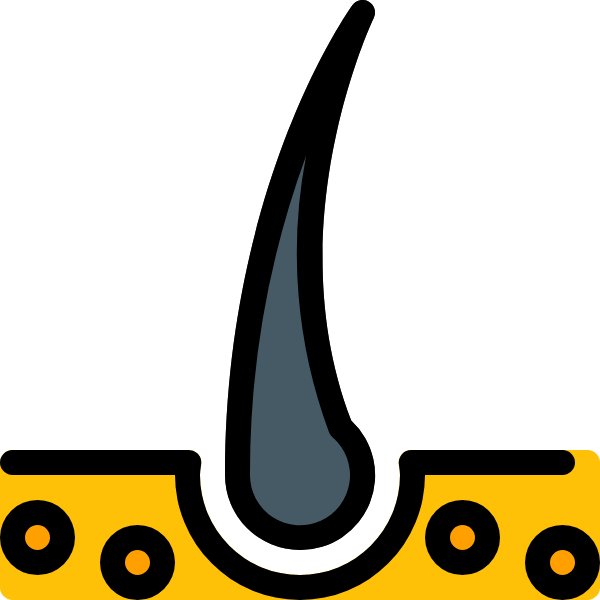Imagine running your fingers through a sea of tightly coiled hair, each strand interwoven like a tapestry. Welcome to the world of dreadlocks, where hair becomes a canvas of self-expression. From its ancient origins to its modern evolution, this article explores the cultural significance, maintenance, and debunking of myths surrounding this unique hairstyle. So dive in and unravel the mysteries of dreadlocks, as we embark on a journey that celebrates individuality and style.
Origins of Dreadlocks
The origins of dreadlocks can be traced back to ancient civilizations where people intentionally cultivated matted hair through a process of neglect and natural dread formation. In these ancient societies, dreadlocks held a significant spiritual meaning and were often associated with religious practices and beliefs.
In ancient Egypt, for example, dreadlocks were seen as a symbol of spirituality and were primarily worn by priests and spiritual leaders. The Egyptians believed that by allowing their hair to naturally form into dreadlocks, they could connect more deeply with the divine and access higher realms of consciousness. It was believed that the tangled locks of hair acted as a conduit for spiritual energy and wisdom.
Similarly, in ancient Hindu culture, dreadlocks, known as "jaṭā" or "jata" in Sanskrit, were associated with Lord Shiva, the god of destruction and transformation. Shiva was often depicted with matted hair, which symbolized his renunciation of worldly attachments and his connection to the spiritual realm. Devotees of Lord Shiva would cultivate dreadlocks as a way to honor and emulate him.
In many African civilizations, dreadlocks also held spiritual significance. They were seen as a way to honor ancestors and connect with the divine forces of nature. The natural formation of dreadlocks was considered a sacred process, and individuals would often undergo rituals and ceremonies during the early stages of their dreadlock journey.
Cultural Significance of Dreadlocks
Dreadlocks hold a significant cultural significance as a symbol of identity and self-expression. Throughout history, various cultures have embraced dreadlocks, each attributing their own meanings and beliefs to this unique hairstyle. Let’s explore the cultural significance of dreadlocks by examining two key aspects: cultural appropriation and spiritual symbolism.
| Cultural Appropriation | Spiritual Symbolism |
|---|---|
| Dreadlocks have often been a subject of cultural appropriation, where individuals from outside of the culture appropriate this hairstyle without understanding its cultural significance. This can be seen in instances where dreadlocks are adopted as a fashion statement or trend, disconnected from the cultural roots they originated from. However, it is important to respect and honor the cultural origins of dreadlocks, acknowledging their historical and spiritual significance. | For many individuals who wear dreadlocks, this hairstyle holds deep spiritual symbolism. In Rastafarian culture, for example, dreadlocks are seen as a representation of the Lion of Judah and a way to connect with their African heritage. In some Native American tribes, dreadlocks are worn by spiritual leaders as a symbol of wisdom and spiritual growth. These examples highlight the spiritual connection that people feel when they choose to wear dreadlocks. |
As dreadlocks continue to evolve in modern society, it is important to recognize their cultural significance and respect the origins of this hairstyle. The next section will delve into the evolution of dreadlocks in modern society, exploring how they have become more mainstream and adopted by people from various backgrounds.
Evolution of Dreadlocks in Modern Society
As we delve into the evolution of dreadlocks in modern society, it’s important to acknowledge their growing popularity and the impact they have had on popular culture. Dreadlocks, once considered a symbol of counterculture and rebellion, have now become a mainstream fashion statement embraced by people from all walks of life. The evolution of dreadlocks in fashion has seen a shift from being associated solely with Rastafarian culture to being a trendy hairstyle adopted by celebrities, influencers, and everyday individuals alike.
The representation of dreadlocks in media has played a significant role in shaping their perception in society. In recent years, we have witnessed a greater acceptance and celebration of dreadlocks in film, television, and music. This increased representation has helped to challenge stereotypes and promote diversity, as dreadlocks are now seen as a symbol of individuality, creativity, and cultural appreciation.
Here are three key points to consider when examining the evolution of dreadlocks in modern society:
-
Breaking stereotypes: The popularity of dreadlocks in fashion has shattered the notion that this hairstyle is limited to a specific culture or lifestyle. People from various backgrounds now proudly rock dreadlocks, showcasing their personal style and challenging societal norms.
-
Redefining beauty standards: The representation of dreadlocks in media has contributed to a more inclusive definition of beauty. By showcasing diverse individuals with dreadlocks, media platforms have helped to broaden the perception of what is considered attractive and fashionable.
-
Cultural appreciation: The evolution of dreadlocks in modern society has highlighted the importance of cultural appreciation and understanding. Many individuals who choose to wear dreadlocks do so as a way to honor and embrace different cultures, promoting unity and acceptance.
Maintaining and Caring for Dreadlocks
How can you effectively maintain and care for your dreadlocks? Maintaining and caring for your dreadlocks is crucial to keeping them healthy and looking their best. One important aspect of maintaining dreadlocks is regular washing. Use a residue-free shampoo specifically designed for dreadlocks to avoid buildup. Gently massage the shampoo into your scalp and roots, then rinse thoroughly. It’s important to dry your dreadlocks completely after washing to prevent mold or mildew from forming. You can use a towel to lightly squeeze out excess water and then air dry or use a low heat setting on a blow dryer.
In addition to washing, it’s essential to regularly palm roll your dreadlocks. This technique involves rolling each dreadlock between your palms to tighten them and encourage the formation of neat, uniform dreads. Doing this once a week will help maintain the shape and structure of your dreadlocks.
Another important aspect of dreadlock maintenance is using the right products. There are various products available that are specifically formulated for maintaining dreadlocks. These include dreadlock shampoos, conditioners, and sprays. These products help to keep your dreadlocks clean, moisturized, and smelling fresh. Be sure to read the labels and choose products that are free from heavy oils or waxes that can cause buildup or make your dreadlocks heavy.
Debunking Common Myths About Dreadlocks
To debunk common myths about dreadlocks, let’s address some misconceptions that may have been brought up in the previous subtopic. Dreadlocks have long been associated with a certain aesthetic and lifestyle, but there are many misconceptions surrounding them. Let’s set the record straight.
-
Myth: Only celebrities can pull off dreadlocks. It’s true that many celebrities have embraced the dreadlock style, from Bob Marley to Zendaya. However, anyone can rock dreadlocks, regardless of their fame or status. Dreadlocks are a personal choice and can be a beautiful expression of individuality.
-
Myth: Dreadlocks are dirty and unhygienic. This is a common misconception that couldn’t be further from the truth. Like any hairstyle, maintaining clean and healthy dreadlocks requires regular washing and proper care. With the right maintenance routine, dreadlocks can be just as clean and hygienic as any other hairstyle.
-
Myth: There is only one way to create dreadlocks. In reality, there are various methods to create dreadlocks, and each method has its own unique result. From the traditional method of allowing the hair to naturally form into locks over time to more modern techniques like backcombing or interlocking, there are countless ways to achieve the desired look. It’s all about finding the method that works best for you.

